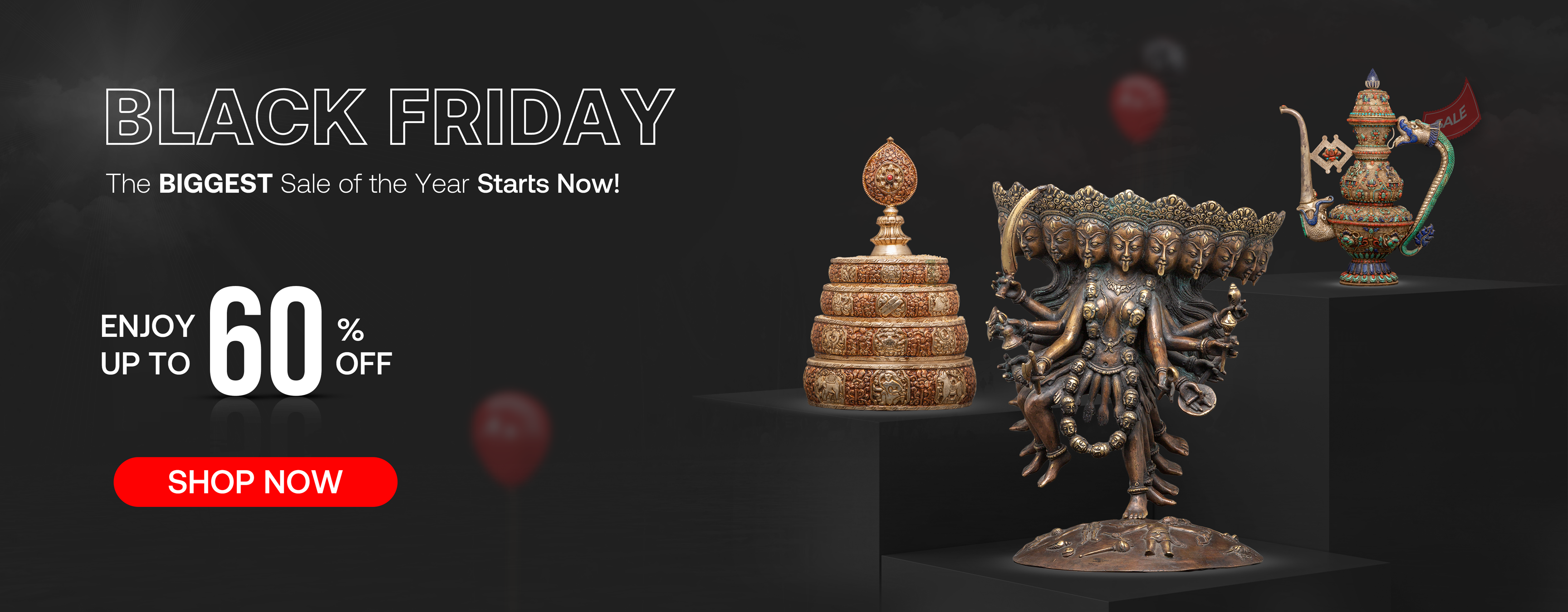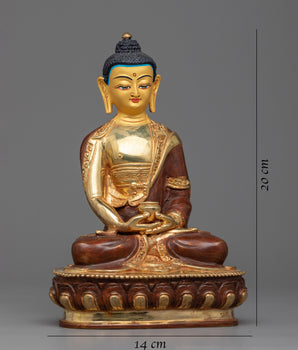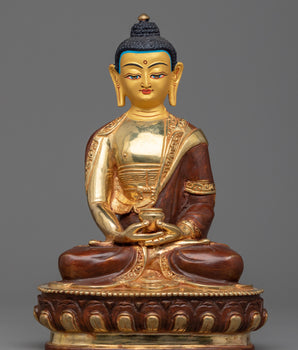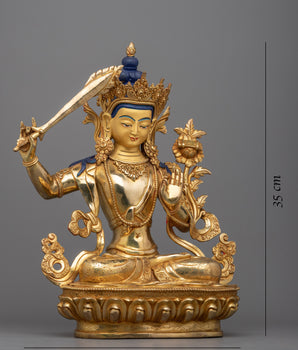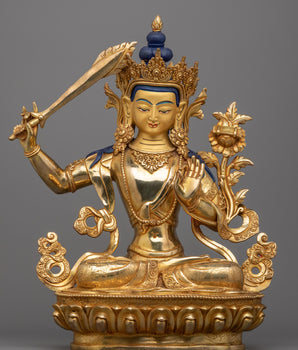Exploring the Art of Tibet’s Ornamental Vessels
The Tibetan snuff bottle resides in the Himalayan highlands among other objects to share its significant historical narrative. The small containers holding powdered tobacco represent more than storage space because they expand into artistic creations that embody meaningful historical value and cultural richness. Special attention went into creating Tibetan snuff bottles with their elaborate symbols and choice materials, making them do more than carry historical value by serving as vessels of heritage.
What are Snuff Bottles?

History shows that a snuff bottle functioned as an itinerant storage device for inhaled tobacco powder known as snuff. The Qing Dynasty in China first made these small bottles before different places such as Tibet adopted their production method using jade and glass together with silver and turquoise, and coral materials. Snuff bottles developed into sophisticated decorative artifacts because they featured significant carvings together with religious designs and special materials of importance. Through Tibetan culture, yet more prominently, the snuff bottle revealed attributes of individuals and their societal position while expressing their spiritual convictions, thus transforming ordinary everyday use items into works of art and cultural heritage collections.
The Origin of Tibetan Snuff Bottles
Tobacco was introduced into Tibet through the Silk Road trade during the 17th and 18th centuries, yet it received different treatment from local people. The first Tibetan tobacco consumption involved snuff instead of smoking tobacco because Tibetans initially used powdered tobacco snuff to inhale through their nostrils. A finely powdered snuff mixture was created from tobacco leaves and various herbs, followed by spices through grinding, which led to a strong sneezing response after inhalation. Tibetan people displayed resistance toward tobacco consumption because the unprocessed tobacco substance did not appeal to them at first. The perception shifted gradually during that period, such that snuff obtained status as a medicinal treatment believed to remove dangerous substances from the body. People believed that snuff inhalation produced sneezing because it cleared nasal passageways through the removal of "doubtful materials," which released harmful substances from the body.
Numerous historical records demonstrate that European missionaries, as well as envoys and traders, became responsible for bringing snuff to Tibet. Academic opinion differs about the historical roots of snuff, where some state that either Japanese or Russian customs and Manchu invader practices introduced the substance during the Qing Dynasty could have provided its origins. Snuff settled comfortably into the Tibetan social fabric through an unknown series of contacts, managing to assimilate into Tibetan culture although it began as a strange habit with unfamiliar origins, particularly gaining entry into upper-class monastic communities.
Cultural Significance of Tibetan Snuff Bottles
1. Personal Identity
Tibetan snuff bottles served both practical needs while reflecting individual social standing, along with ancestral heritage, as well as religious commitments and private viewpoints of their owners.
The social status of the bottle's owner became known through the materials used alongside the degree of artistic detailing. Precious metal snuff bottles and those constructed from turquoise and coral exclusively belonged to the elite as well as monastic groups. The materials possessed beauty alongside spiritual importance.
Starting from the distinct methods used to create snuff bottles in different Tibetan regions, experts could determine the geographical location of bottle owners. Each snuff bottle served as a distinct expression that displayed both personal characteristics and core beliefs of its owner.
2. Heirlooms and Family Legacy
Many Tibetan snuff bottles developed into valuable artifacts, which passed from one generation to the next as family treasures. The bottles underwent spiritual blessings administered by lamas before inheritance, which added sacred value. The bottles functioned as hereditary objects that produced an unbroken link to ancestral customs along with family ancestral records, which maintained cultural heritage.
3. Spiritual Tools
Snuff bottles served dual purposes for daily use and held special importance in Tibetan Buddhist beliefs. Certain types of snuff bottles maintained their importance during rituals because people used them to improve meditation and religious practices. The bottles often bore spiritual symbols and deities, which were believed to shield their owners with religious blessings.
Materials

Tibetan snuff bottles receive their creation from many unique materials. The creators employ distinct materials to achieve these three elements of spiritual meaning, along with visual attractiveness and material durability within their meaningful creations. Each bottle displays distinctive artistic elements that increase its religious and cultural importance.
1. Silver:
- The durability and reflective quality of silver make it suitable for serving as a foundation for intricate patterns.
- Symbolism refers to reflective qualities that both reflect transparency and represent purity.
2. Coral and Turquoise:
- These stones are frequently inlaid into the bottle's surface.
- Turquoise used in Tibetan culture symbolizes spiritual balance and the sky whereas coral carries symbolic meaning of life force protection.
3. Beeswax:
- Traditional bottles are sometimes produced from beeswax material, which presents exceptional craftsmanship with spiritual characteristics.
4. Designs:
- Many bottles display decorative patterns depicting protective deities together with well-known creatures to underline the importance of symbolism in Tibetan artifacts.
- The bottles contain depictions of supernatural deities, Mahakala and Palden Lhamo, who serve as protective entities.
Floral Patterns: Beeswax bottles exemplify the aspects of development, together with complete cleanness and unified organism existence.
Flame-like Designs: The designs symbolize the ability of wisdom to transform and enlighten. Artistry blends with devotion in Tibetan bottle manufacture to create religious items through which individuals connect to spirituality.
Craftsmanship: The Art of Making Tibetan Snuff Bottles

Making Tibetan snuff bottles requires a complete understanding of artistic techniques. The full creation process of snuff bottles displays the mastery of Tibetan artisans because they choose materials and execute intricate carving techniques alongside inlay work. The production of these bottles involved extensive labor due to their manufacture from different materials, such as jade, glass, and coral bone, which required deep dedication in woodworking practice. Further research about Tibetan artisanal work should focus on analyzing the extensive techniques that artisans in distinct Tibetan regions (specifically Lhasa, Kham, and Amdo) employed.
Variations
The places of origin in Tibet affect which specific design features appear in Tibetan snuff bottles. The region of Lhasa contains most snuff bottle production sites, but Amdo and Kham maintain separate artistic styles that differ from Lhasa's artistic conventions. For instance:
The bottles of Lhasa normally present higher refinement through Buddhist symbols combined with intricate metal crafts.
Bottles from Kham and Amdo areas of Eastern Tibet are generally large in size with a rough surface made through stone extraction from native sources such as horn and agate.
The styles used by nomadic people consist of resilient bottles with minimal decoration, followed by functional construction for daily purposes.
The knowledge about specific defining characteristics between areas helps both collections and viewers identify bottle origins.
Why Choose a Tibetan Snuff Bottle?
Tibetan snuff bottles attract numerous groups of people worldwide due to multiple compelling motives:
- One can hold snuff bottles like palms which deepens connection between person and object through stone detailing and engraved designs while feeling present in authentic historical time periods.
- The small display objects containing Tibetan cultural content result from combining traditional craftsman techniques with Tibetan Buddhist state symbols in each bottle.
- Each bottle represents a rare creation because craftsmen combine traditional ornate carvings with stone designs and traditional appearance aesthetics to produce a distinctive work of art.
- Art enthusiasts, alongside cultural and travel aficionados, will find satisfaction through these miniature bottles that function as perfect collectibles or gifts because they beautifully unite history with beauty, along with their scarce nature.
How to Protect Your Tibetan Snuff Bottles?
Tibetan snuff bottles display stability through multiple dimensions, while adverse conditions from aging, together with moisture and manual interaction, may eventually cause damage. There are key steps recommended for preserving your snuff bottle:
- Exposure to sunlight leads to fading and cracking damage of bone ivory stones because researchers should place artifacts in spots with minimal light exposure.
- Treat the bottle gently to prevent contact with facial oils and body dirt because these substances can produce surface haziness and color changes.
- Glass display cases protect bottles from dust and accidental impacts and UV rays, yet enable viewing them for exhibition purposes.
- The bottle requires gentle cleaning using a soft microfiber cloth without exposing it to severe chemicals. Dampness will clean stone and metal components, but should not be used to soak the bottle.
Conclusion: A Legacy in the Palm of Your Hand
Tibetan snuff bottles serve as more than antiquities, which represent personal expressions of cultural heritage and artistic capability and spiritual devotion. The precious materials by which these miniature vessels are crafted alongside sacred symbols tell much about the creators as well as their bearers. These bottles safeguard both tobacco substance and vital Tibetan cultural items that people across generations have sealed away as revered family possessions and important historical artifacts.
As a collector or an art enthusiast, you can experience the profound narrative of traditions through Tibetan snuff bottles by either possessing or appreciating them. The preservation tasks for these vessels reach beyond mere physical maintenance because significant historical containers gain focus as artistic artworks and historical artifacts that initiate discussions for traditional preservation methods and cultural heritage worldwide.
Modern lives need Tibetan snuff bottles as silent expressions that demonstrate that even minor items contain profound significance.





